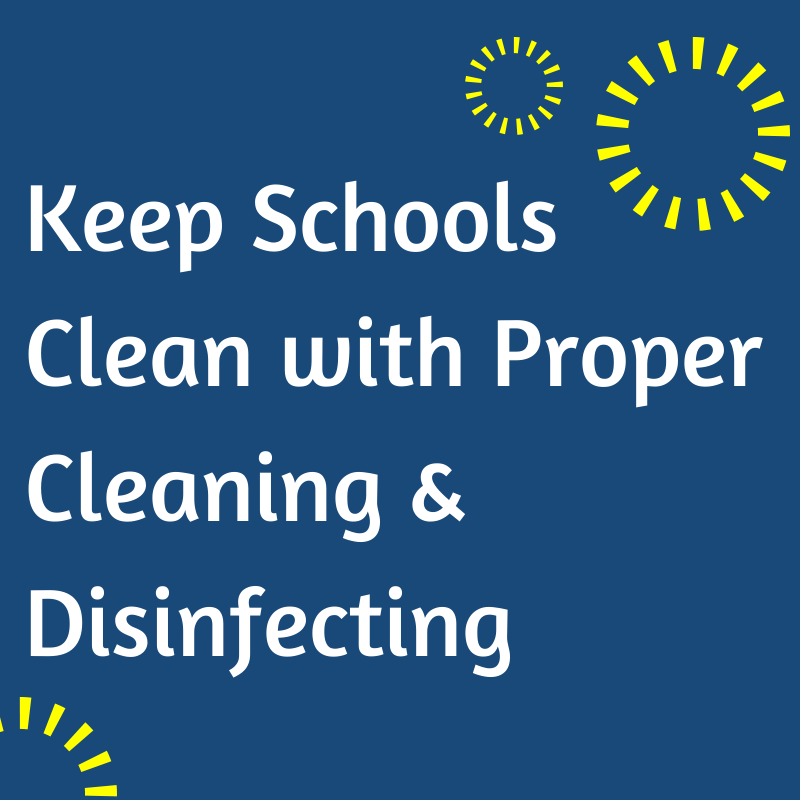 It is important to keep schools clean, as they can easily be overrun by bacteria and illness when proper cleaning and disinfecting procedures are not in place. Every weekday, students and staff fill the school and contribute to the spread of bacteria throughout the building.
It is important to keep schools clean, as they can easily be overrun by bacteria and illness when proper cleaning and disinfecting procedures are not in place. Every weekday, students and staff fill the school and contribute to the spread of bacteria throughout the building.
Therefore, trained cleaning staff are essential to maintaining healthy and clean educational facilities. Studies show that appropriate disinfection techniques reduce the spread of illness, which keeps everyone healthier. However, overusing disinfectants can aggravate allergies and asthma. The key is disinfecting properly.
Proper disinfection can’t take place without first cleaning.
Cleaning Educational Facilities
Before beginning to disinfect, a thorough cleaning must be done. Soils and germs should be removed mechanically first, without the use of toxins – particularly in institutions like schools or hospitals, which have more sensitive populations.
Cleaning efforts must be focused on touch points, as these are the places where germs thrive and spread. Touch points are surfaces that people come into contact with often, such as light switches, door knobs, hand railings, etc.
High touch areas, as well as other areas in the school, should be wiped with microfiber cloths. Microfiber cloths are highly effective, trapping the majority of debris and bacteria before the disinfectant is put in action.
Custodians must clean using techniques to reduce cross-contamination. Microfiber cloths should be washed frequently. Furthermore, the same cloth should not be used to wipe so many surfaces that it is not able to pick up any more material. At this point, debris is simply pushed around rather than removed.
Often, an effective strategy to reduce cross-contamination is to create a colour scheme. Once the colour scheme is established, specific colours will only be used in specific areas (e.g. washrooms), thereby preventing the spread of bacteria from one location to another.
Proper cleaning using microfiber cloths increases the effectiveness of disinfecting.
Disinfecting Educational Facilities
As with cleaning, the most important places to disinfect are a school’s touch points – particularly during flu season or a virus outbreak. Ideally, high touch surfaces should be cleaned and disinfected daily, with so many children and staff touching them every day.
Some of the most common touch points in schools are desks, cafeteria tables, computer mice and keyboards, library tables, water fountains, faucet handles, toilet levers, and lockers.
Adhering to proper dwell times is essential for proper disinfecting. Follow the instructions that accompany the product. If disinfectant is sprayed and immediately wiped away, it will not be as effective.
With a combination of proper cleaning techniques and disinfecting procedures, schools can significantly reduce the spread of illnesses and the frequency of absenteeism.
>> Sunshine Building Maintenance offers comprehensive institutional cleaning services, with experience in cleaning schools. Contact us today to discuss a program for your facility.
Related Posts
The Rapid Return on Investment of Microfiber Technology
5 Cleaning Tricks to Reduce Asthma Triggers
Keeping Schools Clean Over Summer Break